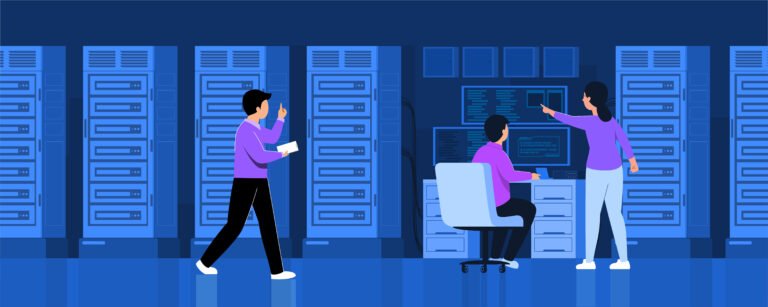Machine Learning Course in Chandigarh
Machine Learning Course in Chandigarh
In today’s fast-paced technological world, Machine Learning (ML) is reshaping industries and redefining career paths. As artificial intelligence continues to dominate various sectors, gaining expertise in machine learning has become a high-priority goal for students and professionals alike. Chandigarh, known for its educational infrastructure, has emerged as a prominent hub for tech-based learning. With the increasing demand for AI skills, enrolling in a Machine Learning course in Chandigarh is an ideal move to future-proof your career.
This article will take you through the essentials of machine learning, its key algorithms, models, learning types, and why Chandigarh is a great place to start your ML journey.
What is Machine Learning?
Machine Learning is a subset of Artificial Intelligence that empowers systems to learn and improve from experience without being explicitly programmed. By utilizing data, machine learning algorithms are able to make predictions, classify information, and automate decision-making processes. Essentially, ML algorithms create models based on patterns identified in datasets, allowing machines to “learn” and evolve.
Machine learning is the backbone of numerous modern applications—ranging from personalized recommendations on streaming platforms to fraud detection in banking. Businesses across sectors are investing in ML technologies to automate workflows, enhance customer experiences, and make data-driven decisions.
Pursuing a Machine Learning course in Chandigarh provides individuals with a clear understanding of how machines and algorithms can be trained to simulate human intelligence, solving complex problems across diverse industries.
Why Machine Learning in Chandigarh?
Chandigarh has emerged as a preferred destination for tech education due to its well-established academic institutions, competitive learning environments, and growing tech communities. Many institutes in Chandigarh offer hands-on experience, with a curriculum that emphasizes practical knowledge, ensuring students not only grasp theoretical concepts but also gain real-world experience. The city’s close proximity to IT hubs and corporate firms in places like Mohali adds an extra edge, providing students with ample opportunities for internships, placements, and professional networking.
In addition, Chandigarh’s affordable cost of living, high-quality infrastructure, and growing number of tech startups make it an attractive destination for students looking to build a solid foundation in AI and machine learning.
What are Machine Learning Algorithms?
At the heart of machine learning lies its algorithms—sets of rules or techniques used to train models and extract meaningful information from data. These algorithms vary in their approach depending on the problem they are designed to solve.
Here are some commonly used Machine Learning algorithms:
- Linear Regression – One of the simplest algorithms, used for predicting a continuous output variable. It finds a relationship between the input variables and the predicted output by fitting a linear equation.
- Logistic Regression – This algorithm is widely used for binary classification tasks, such as determining whether an email is spam or not. Despite its name, it is primarily used for classification rather than regression.
- Decision Trees – These algorithms work by splitting data into branches based on decision rules derived from the input features. It is used for both classification and regression tasks, making it versatile.
- Support Vector Machines (SVMs) – These algorithms find an optimal hyperplane to classify data points in a multi-dimensional space, particularly effective in classification tasks.
- K-Means Clustering – A popular unsupervised algorithm used to divide data into clusters. It helps in identifying patterns and segmenting data when no prior labels are available.
- Neural Networks – The foundation of deep learning, neural networks mimic the human brain’s structure to process complex patterns and learn from large datasets.
What are Machine Learning Models?
Machine learning models are the frameworks or structures that use these algorithms to learn from data. Each model is tailored to solve a specific type of problem, such as classification, regression, or clustering. The variety of machine learning models can be classified into three main categories:
- Supervised Learning Models
In supervised learning, the model learns from labeled data. A labeled dataset includes input-output pairs, where the desired output is already known. For example, predicting house prices based on features like size, location, and number of rooms falls under supervised learning. Common models include Decision Trees, Support Vector Machines, and Random Forests. - Unsupervised Learning Models
Unsupervised learning works with unlabeled data. The model tries to discover underlying patterns or relationships within the data itself. For instance, clustering customers based on purchasing behavior using K-Means clustering is a form of unsupervised learning. Models like PCA (Principal Component Analysis) and clustering algorithms dominate this domain. - Reinforcement Learning Models
In reinforcement learning, models learn by interacting with their environment and receiving feedback in the form of rewards or penalties. This type of learning is used in decision-making processes, robotics, and game development, where the model learns optimal strategies through trial and error.
What are the Different Types of Learning in AI?
Artificial Intelligence encompasses a broad spectrum of learning techniques, with machine learning being a significant part of it. Understanding the different types of learning in AI is crucial to choosing the right approach to solving a particular problem.
- Supervised Learning
As mentioned earlier, supervised learning requires labeled data. The model learns by mapping input to output and makes predictions or classifications. It is extensively used in applications like medical diagnosis, fraud detection, and sentiment analysis. - Unsupervised Learning
In this form of learning, the model tries to make sense of data without labeled outputs. It groups similar data points together or finds patterns. Clustering and association rule mining are typical examples of unsupervised learning used in market research, customer segmentation, and anomaly detection. - Reinforcement Learning
Reinforcement learning differs from both supervised and unsupervised learning. The model learns through trial and error by interacting with an environment. This method is gaining popularity in robotics, autonomous vehicles, and AI-driven games. - Semi-supervised Learning
This hybrid approach uses both labeled and unlabeled data for training. Semi-supervised learning is beneficial when labeling large datasets is expensive or time-consuming. - Self-supervised Learning
A variant of unsupervised learning where the model creates its own labels from the available data. It is mainly used in natural language processing and computer vision tasks.
Conclusion
As industries continue to embrace digital transformation, the demand for machine learning professionals is at an all-time high. Whether you’re a student, a tech enthusiast, or an experienced professional, enrolling in a Best Machine Learning course in Chandigarh can provide the foundation you need to thrive in this cutting-edge field.
With a range of institutions offering specialized courses, and a growing tech scene to support practical learning, Chandigarh is the ideal place to kickstart your journey into AI and machine learning. Understanding ML algorithms, models, and learning types will equip you with the tools necessary to solve real-world problems using AI, setting you up for a successful career in technology.






